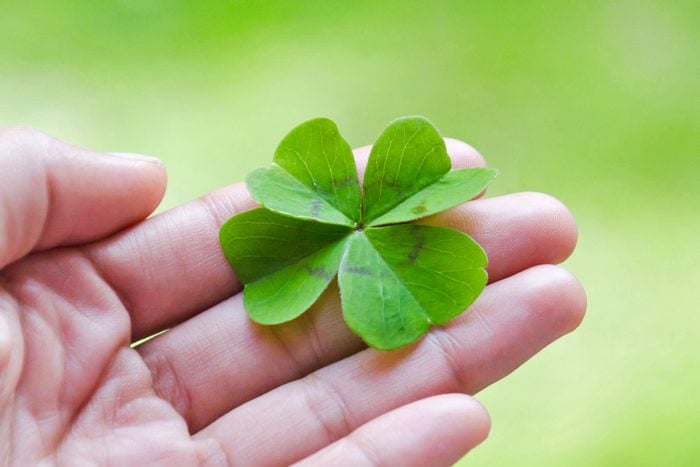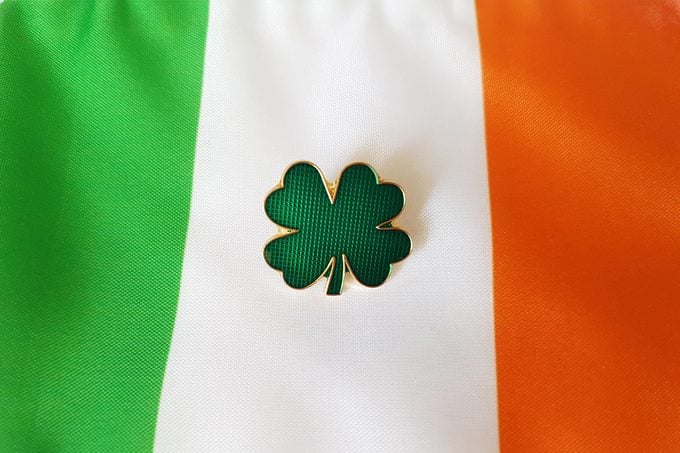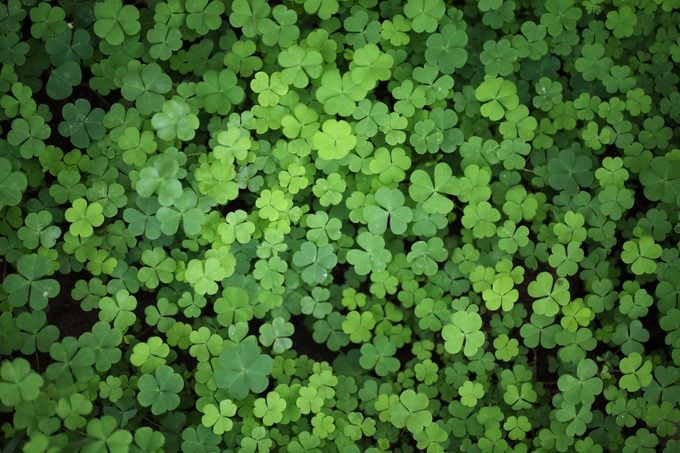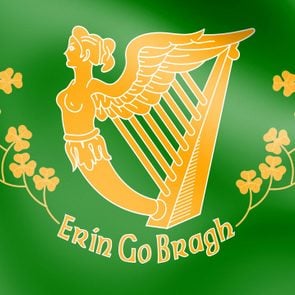Why Four-Leaf Clovers Are Considered Lucky
Updated: Mar. 31, 2024

We all know carrying a four-leaf clover will bring you good fortune, but the history of this lucky symbol may surprise you
Whether you’re a fan of the Boston Celtics or you have a countdown to St. Patrick’s Day on your calendar, you’re definitely aware of the shamrock (aka the three-leafed clover) and all it represents: Ireland, Celtic heritage and, of course, St. Patrick’s Day traditions. But when it comes to the shamrock’s famously lucky relative, the four-leaf clover, its meaning gets more complicated.
So, before St. Paddy’s Day on March 17, learn about the true four-leaf-clover meaning, so you can welcome good fortune—not only on the big day, but throughout the rest of the year too!
Get Reader’s Digest’s Read Up newsletter for more holiday insights, fun facts, humor, cleaning, travel and tech all week long.
About the experts
|
Why is the four-leaf clover considered lucky?
Luck doesn’t only come from a good St. Patrick’s Day quote! One legend has it that the luck factor comes from Eve herself. As Adam and Eve were leaving the Garden of Eden, Eve is said to have plucked a single four-leafed clover as a souvenir of paradise, and this religious connection has led to them being considered lucky ever since. Four-leaf clovers were also been seen in fables. “Children are recorded in folklore as carrying them in the hope that they could see fairies, and more generally, people carried them in a pre-modern world because they believed it would bring them luck and ward off illness,” says Mike Cronin, the academic director of Boston College Ireland.
However, the belief that four-leaf clovers are lucky may have already existed among the Celtic peoples, probably because of the proliferation of clovers in Ireland and the rarity of finding one with four leaves. Many Celtic traditions were blended with the new religion over the years, and the importance of the clover was one of them. The four-leaf-clover meaning became intertwined with Christianity, so the first three leaves came to represent faith, hope and love, and the fourth leaf, God’s grace or luck.
How are clovers and shamrocks connected to Ireland?

“In the 18th century, the cult of St. Patrick associated the three-leaf shamrock (which is a clover) with a legend that he used to teach the Catholic doctrine of the Holy Trinity (Father, Son and Holy Spirit in one God),” says Marion R. Casey, a historian on the faculty of New York University’s Glucksman Ireland House.
Other than the fact that they’re green and everywhere, the shamrock has such symbolism that they were even recorded as being worn by Irish people as early as the 1720s. “The shamrock was used as a symbol by Irish militia groups in the 1700s, and after the Act of Union, which made Ireland formally part of the United Kingdom in 1800, the shamrock appeared beside the Scottish thistle and the English rose to symbolize the unity of the three kingdoms,” Casey says.
Why do four-leaf clovers exist?
A genetic study at the University of Georgia (UGA) concluded that any more than three leaves on a clover are due to a genetic mutation in the genome of the common clover species, white clover (or Trifolium repens).
How rare are four-leaf clovers?

According to Casey, four-leaf clovers “are as rare as the five-leaf clover, which is considered even luckier. The three-leaf clover is recognized as the genuine shamrock, and that is why it is emblazoned on the tails of Aer Lingus jets, the Irish national airline.”
Although it has been said that four-leaf clovers are exceedingly rare—as few as one in 10,000—an independent study carried out by Swiss researchers looked at 5.7 million clovers and found that the likelihood of finding one four-leaf clover was one in 5,076 three-leafed ones. Much better odds! Researchers at UGA also learned that you’re likely to see four-leaf clovers during the warmer months. And if you find one, there’s a higher chance of finding another one in the same area.
Are shamrocks and clovers the same thing?
Yes and no! Shamrocks are a type of clover. Shamrock, which comes from the Old Irish word seamróg, means “little clover” and describes a three-leaf clover. Since a four-leaf clover has four leaves, it is not considered a shamrock. That small lucky leaf makes all the difference!
Can you find clovers with more than four leaves?
Yes, you can find clovers with more than just four leaves! In fact, the Guinness World Record for the most leaves found on a clover is 56.
How do I find a four-leaf clover?
Find your very own four-leafed good-luck charm on St. Patrick’s day and beyond with the tips below:
- Find a patch of clover. According to Scientific American, “a typical clover field contains about 200 clovers per 60 square centimeters.” To increase your chances of finding a four-leaf clover, they suggest scanning around 1.2 square meters of clovers—which works out to roughly 10,000 clover leaves.
- Instead of scanning each clover individually, look for “something that deviates from the normal pattern.” Once you find it, go in for closer observation.
- Search while the sun is still up because clovers tend to go to sleep early, folding up their leaves about an hour before sunset.
- Once you’ve found a likely, well-lit spot, it’s almost like a magic-eye painting: Relax your eyes, and scan for the correct shape. The good news is that because it’s a genetic mutation, one four-leaf clover means another usually isn’t far away, so you might double your luck.
Sources:
- Mike Cronin, academic director of Boston College Ireland; email interview, Feb. 22, 2024
- Marion R. Casey, historian at New York University’s Glucksman Ireland House and author of The Green Space: The Transformation of the Irish Image; email interview, Feb. 20, 2024
- Inside Science: “Shamrock Science: St. Patrick’s Day Symbol Versus the Four-Leaf Clover”
- Crop Science: “Leaf Trait Coloration in White Clover and Molecular Mapping of the Red Midrib and Leaflet Number Traits”
- Fort Worth Botanic Garden: “Will the real four-leaf clover please stand up?!”
- Guinness World Records: “Most Leaves on a Clover”
- Scientific American: “How Science Can Help You Find a 4-Leaf Clover – Instant Egghead #64”



